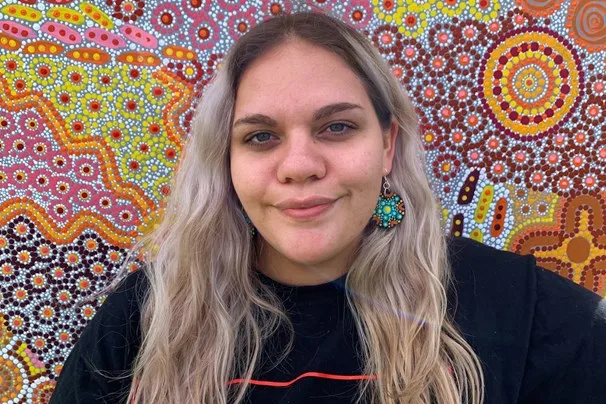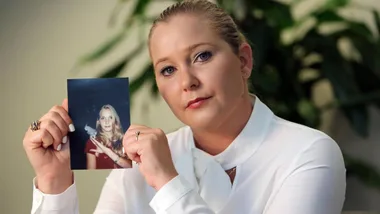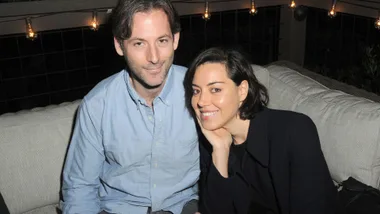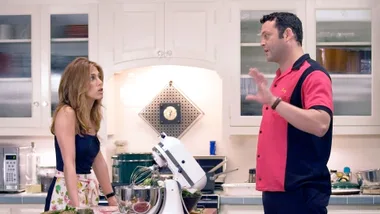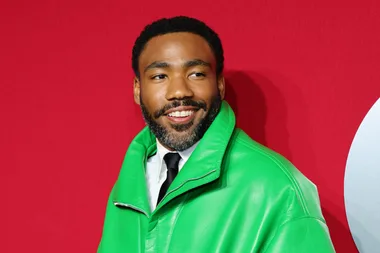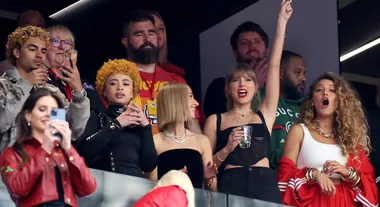Whether you’ve come across her popular works of art on Instagram or not, there is no doubt that Zoe Fitzpatrick is talented. And she looks to be harnessing her Indigenous culture to raise awareness for a sector often forgotten about: Aboriginal health.
Aside from her creative endeavours, Fitzpatrick is quickly becoming one of Australia’s most influential educators when it comes to Indigenous health care. Currently completing a Bachelors Degree in Nursing, her work in health education may have just begun, but she is already taking impressive strides. A member of Menzies HealthLab, she helps to deliver health education programs to remote communities. She is also working closely with the Bridging The Gap Foundation to develop an educational video that will teach traditional Indigenous health to the non-Indigenous.
“A lot of people lack in understanding why Aboriginal people are the oldest living culture in the world”, Fitzpatrick says. “We were so advanced in many aspects, and medicine was one of them, and unfortunately the significance of Aboriginal health traditions is rarely acknowledged or known about”.
Filmed in two parts, the video will cover the ways in which First Nation peoples take care of their health in traditional ways, as well as why it is so important for them to “take care of themselves through the westernised way of health care”.
Impressive to say the least, her dedication for health education started long before she began her tertiary studies. A proud Yanyuwa and Garrwa woman, Fitzpatrick hails from Borroloola in the Northern Territory. And it was through her traditional upbringing, where she first found her love for Aboriginal health. Her father, a doctor for nearly 40 years, has spent his career working in remote communities or Aboriginal-orientated clinics.
“He is easily one of my biggest inspirations when it comes to Aboriginal health, because I have gotten to witness how much of a positive impact he’s made on Aboriginal people, who admire and appreciate him because of his dedication to being a great doctor and a strong advocate for Aboriginal people,” she says.
However, when it comes to intertwining Indigenous and westernised medicine, there is still a long way to go, according to Fitzpatrick. “Unfortunately, I’ve grown up going to endless amounts of funerals for my family members who are dying from preventable medical problems, including my own grandparents,” she reveals.
“This is one of the major reasons I am so passionate to change the statistics, by providing health care and health education to as many Aboriginal people as I can to prevent preventable deaths.”

But with her advocacy, Fitzpatrick has dealt with her fair share of challenges. The only Aboriginal nursing student in her 200-person cohort, she has struggled with feeling singled-out. She opens up about how she had to get used to feeling, “after growing up in the [Northern Territory] and being surrounded by people who were just like me and looked like me”.
“On one of my placements I had a patient tell me that I was ‘pretty for an Aboriginal’, which made me feel so horrible that there are people out there that don’t see the beauty in Aboriginal people and it breaks my heart. Situations like that can make it very difficult to be an Aboriginal nurse in metropolitan hospitals, where racism and stereotypes are a lot more common.”
Despite the challenges, the positives outweighed the negatives. In particular, Fitzpatrick recalls meeting an Indigenous woman, while on a university placement, who refused to comply with her doctors. However after meeting Fitzpatrick, the pair connected. “Because we both were Aboriginal women, I was able to communicate with her in a way she understood and she now had someone she could trust in a big metropolitan hospital filled with strangers and people who may judge or look down on her,” she explains.
And this experience only further proved the necessity for her work. “[It] felt amazing because I got to use my identity and connection with my culture to help her not feel scared and assisting her with the medical treatment she desperately needed”.
Aside from her medical work, Fitzpatrick’s artistic flare is like no other. Her business Mardijbalina Art, is growing rapidly on Instagram, with her authentic Aboriginal paintings and jewellery serving as heirlooms of her humble upbringing in rural Northern Territory. Taught to paint by her mother, grandparents, aunties and uncles, she credits her remote childhood community that’s rich in culture, for her creativity.
“That’s a big reason why I’m a proud Aboriginal woman because I am still very connected and involved in my culture. My mother still teaches me more and more about my culture on a daily basis,” she says. “With the help from my mum, and the fact that she speaks fluent Garrwa (one of the main languages spoken in Borroloola), we are able to inform and educate non-indigenous people about our culture through my art”.

Juggling her nursing degree, her work with HealthLab and her growing artistic ventures, Fitzpatrick’s increasing popularity online has helped share her culture with others. And with commissions for her pieces completely booked out, her efforts are clearly working.
“The best part about having a large following means more people are going to see and read my posts and I will be able to educate them about Aboriginal art and culture to the best of my knowledge”.
If you would like to follow Zoe Fitzpatrick and her work, you can follow her on Instagram here.
